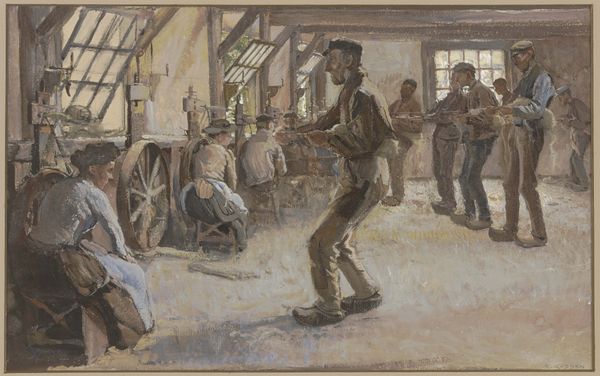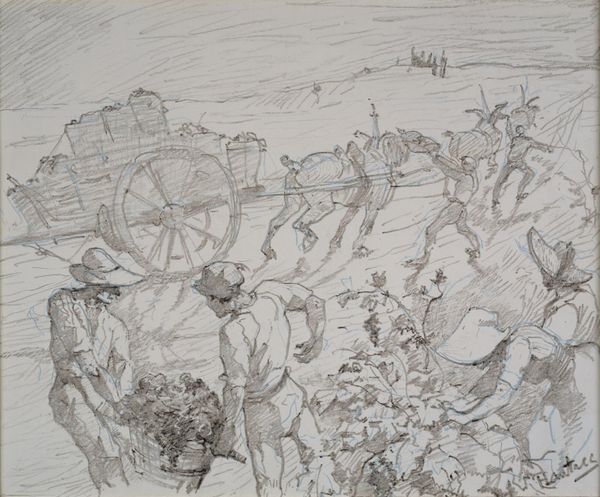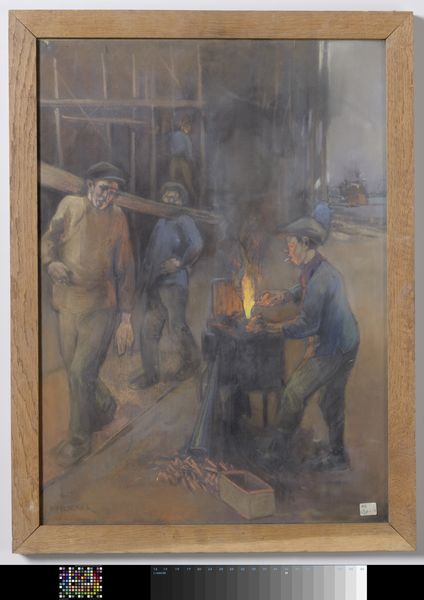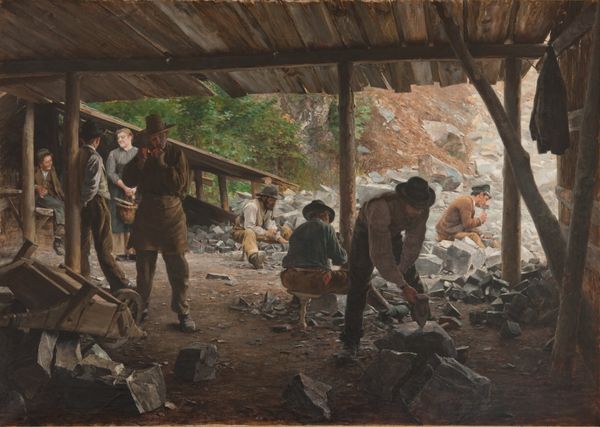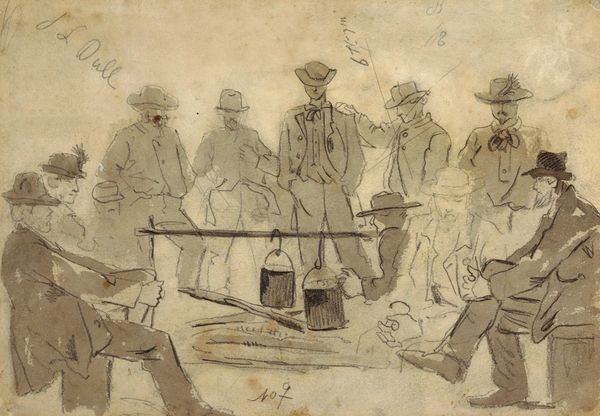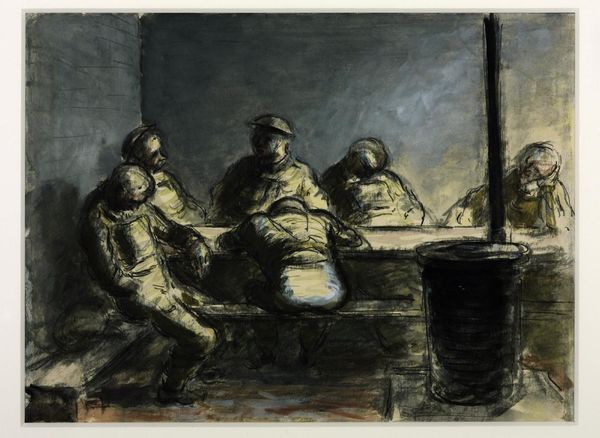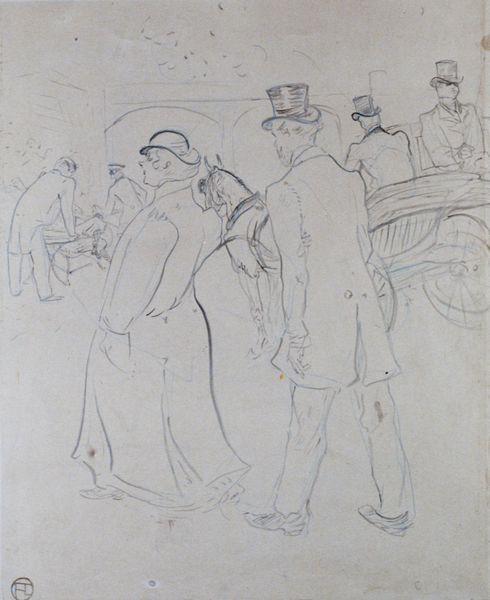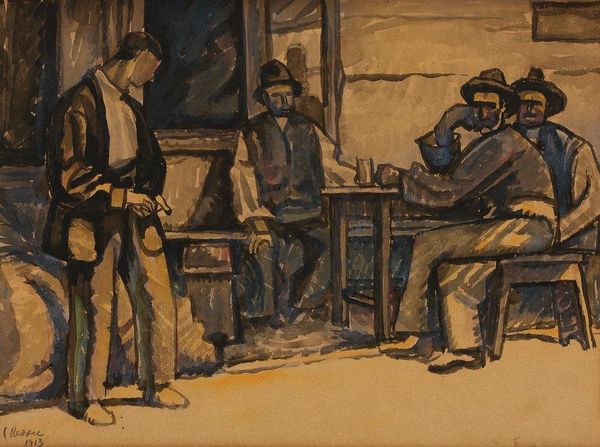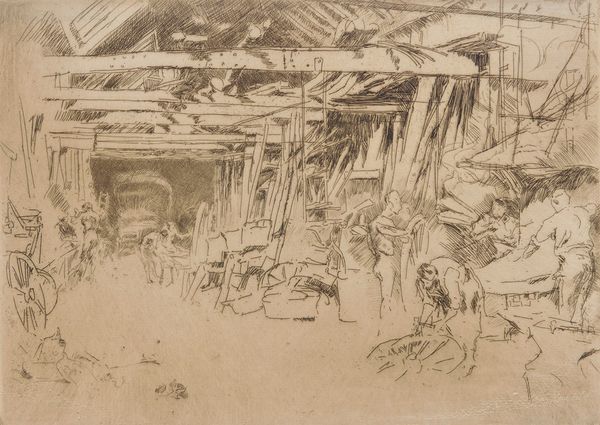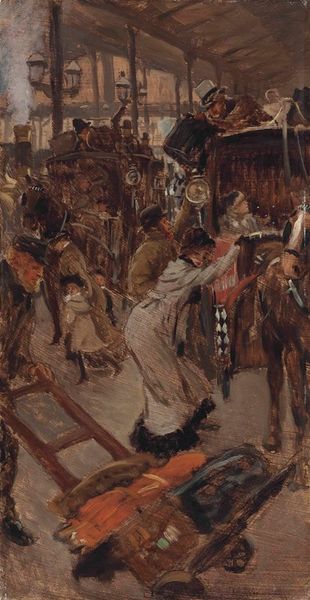
drawing, pen, charcoal
#
drawing
#
landscape
#
charcoal drawing
#
figuration
#
pen
#
genre-painting
#
charcoal
#
charcoal
#
realism
Dimensions: 30 x 44 cm
Copyright: Public domain
Curator: Looking at this charcoal and pen drawing by Adolf Hirémy-Hirschl, we see a study titled “Sailors in the Harbour of Pola.” Editor: My first impression is one of somber duty. The muted tones, the almost photographic realism in the rendering of the sailors… there's a palpable sense of weight to the scene. It feels very grounded, almost immobile. Curator: I agree. It captures a moment of naval life, but within a broader socio-political context. Pola, now Pula in Croatia, was a major port for the Austro-Hungarian Empire. Images like this were often deployed to reinforce the strength and reach of the Empire’s naval power. Editor: Indeed. Formally, observe how the artist uses layering to create depth. Notice the foreground figures; how meticulously Hirémy-Hirschl defines their forms. In contrast, the background sailors are almost ghostlike—merely hinted at. This focuses our attention on the labour, the ‘work’ being done in the moment, rather than the collective might. Curator: It's interesting how you interpret that choice. To me, the contrast may not be solely for emphasis. The less defined figures in the background might represent the rank and file—the nameless, faceless contributors to the imperial project, while those in the foreground represent the perceived glory or accomplishment. Editor: Perhaps both readings are valid. Consider the visual effect, however. The sharp contrasts serve to emphasize the texture of the materials—the fabric of the uniforms, the cool metal of the machinery they operate—again drawing the viewer into a very immediate, sensory experience of the moment. Curator: Absolutely. These were powerful visual strategies used to legitimize not only naval operations, but empire. Editor: It shows, too, the artist’s capacity to translate the complex into simplified lines. The use of shading helps render forms from simple markings; truly effective mark-making in service of complex composition. Curator: Considering the role that art played in shaping public opinion about war and naval power during that time gives me new appreciation for the multiple layers captured in the image. Editor: Yes. What initially felt like a static scene opens into a contemplation of materiality and its relation to power structures, which for me provides a valuable view.
Comments
No comments
Be the first to comment and join the conversation on the ultimate creative platform.
